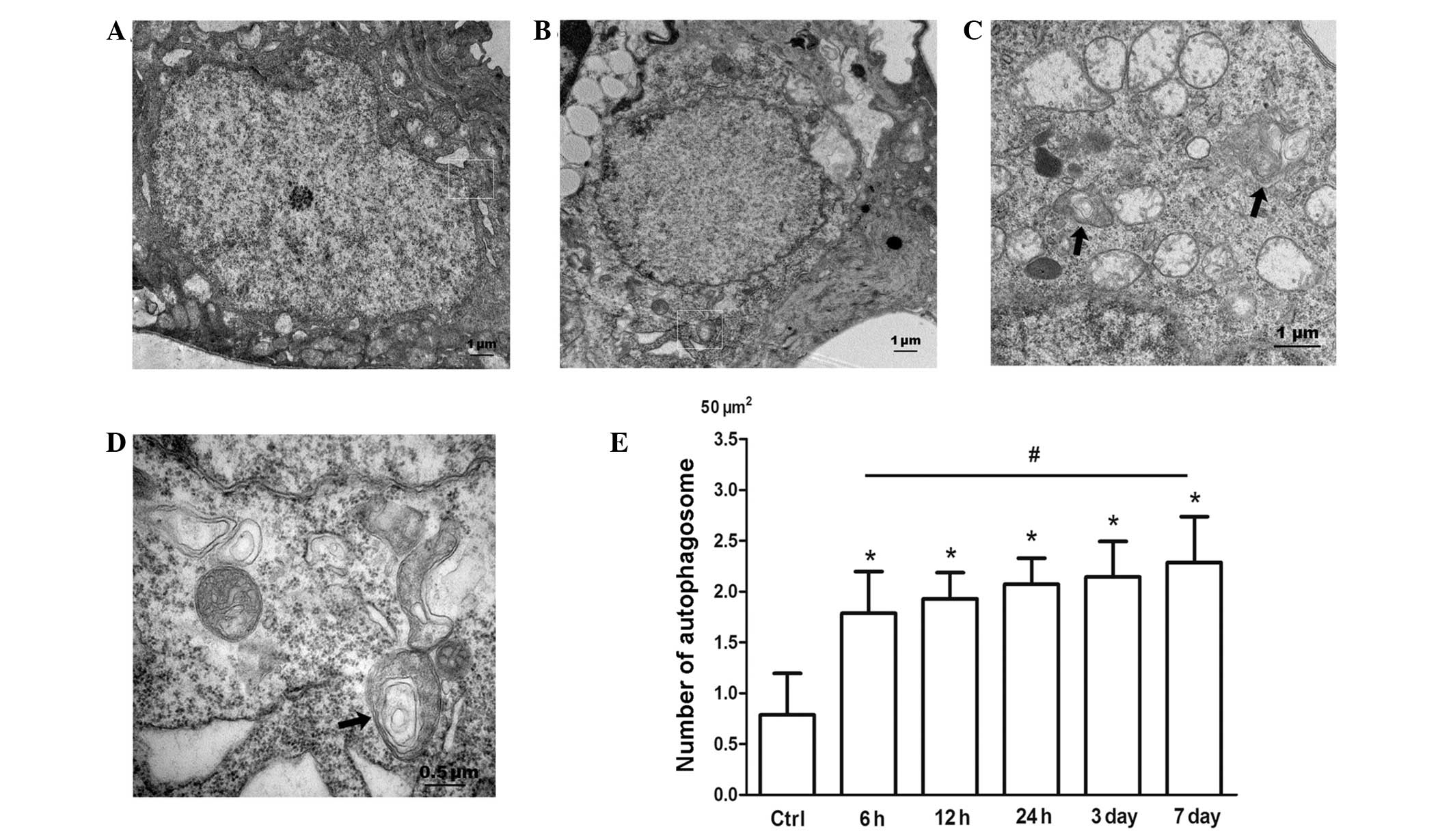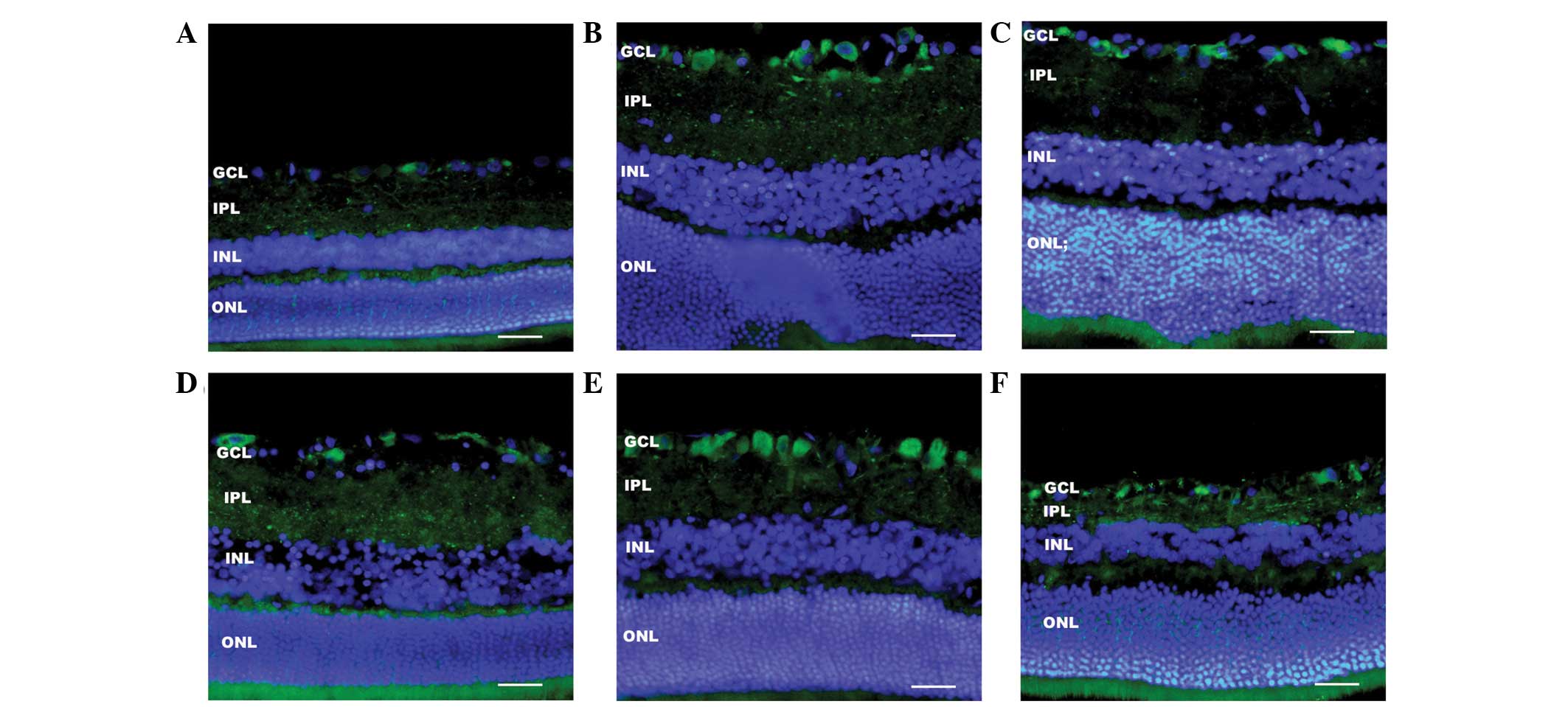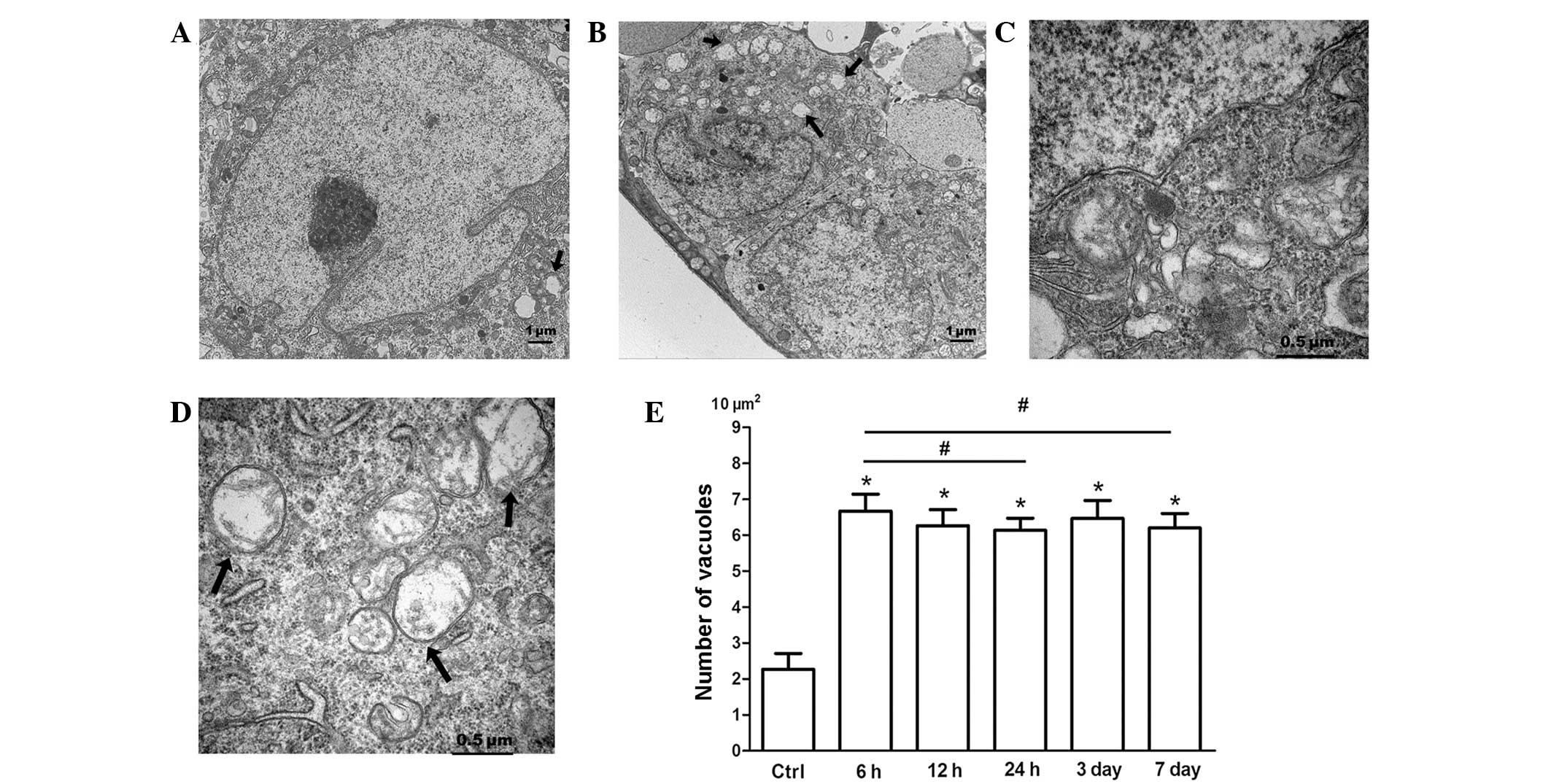|
1
|
Quigley HA: Glaucoma. Lancet.
377:1367–1377. 2011. View Article : Google Scholar : PubMed/NCBI
|
|
2
|
Osborne NN, Casson RJ, Wood JP, Chidlow G,
Graham M and Melena J: Retinal ischemia: mechanisms of damage and
potential therapeutic strategies. Prog Retin Eye Res. 23:91–147.
2004. View Article : Google Scholar : PubMed/NCBI
|
|
3
|
Kaur C, Foulds WS and Ling EA:
Hypoxia-ischemia and retinal ganglion cell damage. Clin Ophthalmol.
2:879–889. 2008. View Article : Google Scholar
|
|
4
|
Sun MH, Pang JH, Chen SL, et al: Retinal
protection from acute glaucoma-induced ischemia-reperfusion injury
through pharmacologic induction of heme oxygenase-1. Invest
Ophthalmol Vis Sci. 51:4798–4808. 2010. View Article : Google Scholar : PubMed/NCBI
|
|
5
|
Yang Z and Klionsky DJ: Eaten alive: A
history of macroautophagy. Nat Cell Biol. 12:814–822. 2010.
View Article : Google Scholar : PubMed/NCBI
|
|
6
|
Mizushima N, Levine B, Cuervo AM and
Klionsky DJ: Autophagy fights disease through cellular
self-digestion. Nature. 451:1069–1075. 2008. View Article : Google Scholar : PubMed/NCBI
|
|
7
|
Hotchkiss RS, Strasser A, McDunn JE and
Swanson PE: Cell death. N Engl J Med. 361:1570–1583. 2009.
View Article : Google Scholar : PubMed/NCBI
|
|
8
|
Hara T, Nakamura K, Matsui M, et al:
Suppression of basal autophagy in neural cells causes
neurodegenerative disease in mice. Nature. 441:885–889. 2006.
View Article : Google Scholar : PubMed/NCBI
|
|
9
|
Fimia GM, Stoykova A, Romagnoli A, et al:
Ambra1 regulates autophagy and development of the nervous system.
Nature. 447:1121–1125. 2007.PubMed/NCBI
|
|
10
|
Nijholt DA, de Graaf TR, van Haastert ES,
et al: Endoplasmic reticulum stress activates autophagy but not the
proteasome in neuronal cells: implications for Alzheimer’s disease.
Cell Death Differ. 18:1071–1081. 2011. View Article : Google Scholar : PubMed/NCBI
|
|
11
|
Wong E and Cuervo AM: Autophagy gone awry
in neurodegenerative diseases. Nat Neurosci. 13:805–811. 2010.
View Article : Google Scholar : PubMed/NCBI
|
|
12
|
Piras A, Gianetto D, Conte D, Bosone A and
Vercelli A: Activation of autophagy in a rat model of retinal
ischemia following high intraocular pressure. PLoS One.
6:e225142011. View Article : Google Scholar : PubMed/NCBI
|
|
13
|
Park HY, Kim JH and Park CK: Activation of
autophagy induces retinal ganglion cell death in a chronic
hypertensive glaucoma model. Cell Death Dis. 3:e2902012. View Article : Google Scholar : PubMed/NCBI
|
|
14
|
Sperandio S, Poksay KS, Schilling B,
Crippen D, Gibson BW and Bredesen DE: Identification of new
modulators and protein alterations in non-apoptotic programmed cell
death. J Cell Biochem. 111:1401–1412. 2010. View Article : Google Scholar : PubMed/NCBI
|
|
15
|
Sperandio S, de Belle I and Bredesen DE:
An alternative, nonapoptotic form of programmed cell death. Proc
Natl Acad Sci USA. 97:14376–14381. 2000. View Article : Google Scholar : PubMed/NCBI
|
|
16
|
Broker LE, Kruyt FA and Giaccone G: Cell
death independent of caspases: a review. Clin Cancer Res.
11:3155–3162. 2005. View Article : Google Scholar : PubMed/NCBI
|
|
17
|
Wang Y, Li X, Wang L, Ding P, Zhang Y, Han
W and Ma D: An alternative form of paraptosis-like cell death,
triggered by TAJ/TROY and enhanced by PDCD5 overexpression. J Cell
Sci. 117:1525–1532. 2004. View Article : Google Scholar : PubMed/NCBI
|
|
18
|
Turmaine M, Raza A, Mahal A, Mangiarini L,
Bates GP and Davies SW: Nonapoptotic neurodegeneration in a
transgenic mouse model of Huntington’s disease. Proc Natl Acad Sci
USA. 97:8093–8097. 2000. View Article : Google Scholar
|
|
19
|
Fombonne J, Padron L, Enjalbert A, Krantic
S and Torriglia A: A novel paraptosis pathway involving
LEI/L-DNaseII for EGF-induced cell death in somato-lactotrope
pituitary cells. Apoptosis. 11:367–375. 2006. View Article : Google Scholar : PubMed/NCBI
|
|
20
|
Valamanesh F, Torriglia A, Savoldelli M,
Gandolphe C, Jeanny JC, BenEzra D and Behar-Cohen F:
Glucocorticoids induce retinal toxicity through mechanisms mainly
associated with paraptosis. Mol Vis. 13:1746–1757. 2007.PubMed/NCBI
|
|
21
|
Karl R, Singha PK, Venkatachalam MA and
Saikumar P: A novel role for MAP1 LC3 in nonautophagic cytoplasmic
vacuolation death of cancer cells. Oncogene. 28:2556–2568. 2009.
View Article : Google Scholar
|
|
22
|
Xie BS, Zhao HC, Yao SK, et al: Autophagy
inhibition enhances etoposide-induced cell death in human hepatoma
G2 cells. Int J Mol Med. 27:599–606. 2011.PubMed/NCBI
|
|
23
|
Rami A, Langhagen A and Steiger S: Focal
cerebral ischemia induces upregulation of Beclin 1 and
autophagy-like cell death. Neurobiol Dis. 29:132–141. 2008.
View Article : Google Scholar
|
|
24
|
Hoa N, Myers M, Douglass T, et al:
Molecular mechanisms of paraptosis induction: implications for a
non-genetically modified tumor vaccine. PLoS One. 4:e46312009.
View Article : Google Scholar : PubMed/NCBI
|
|
25
|
Wang WB, Feng LX, Yue QX, et al:
Paraptosis accompanied by autophagy and apoptosis was induced by
celastrol, a natural compound with influence on proteasome, ER
stress and Hsp90. J Cell Physiol. 227:2196–2206. 2012. View Article : Google Scholar
|
|
26
|
Pehar M, O’Riordan KJ, Burns-Cusato M, et
al: Altered longevity-assurance activity of p53:p44 in the mouse
causes memory loss, neurodegeneration and premature death. Aging
Cell. 9:174–190. 2010. View Article : Google Scholar : PubMed/NCBI
|
|
27
|
Tardito S, Isella C, Medico E, et al: The
thioxotriazole copper(II) complex A0 induces endoplasmic reticulum
stress and paraptotic death in human cancer cells. J Biol Chem.
284:24306–24319. 2009. View Article : Google Scholar : PubMed/NCBI
|
|
28
|
Kim HS and Park CK: Retinal ganglion cell
death is delayed by activation of retinal intrinsic cell survival
program. Brain Res. 1057:17–28. 2005. View Article : Google Scholar : PubMed/NCBI
|
|
29
|
Danaila L, Popescu I, Pais V, et al:
Apoptosis, paraptosis, necrosis, and cell regeneration in
posttraumatic cerebral arteries. Chirurgia (Bucur). 108:319–324.
2013.
|
|
30
|
Pais V, Danaila L and Pais E:
Ultrastructural patterns of the activated cell death programs in
the human brain. Ultrastruct Pathol. 37:110–120. 2013. View Article : Google Scholar : PubMed/NCBI
|

















